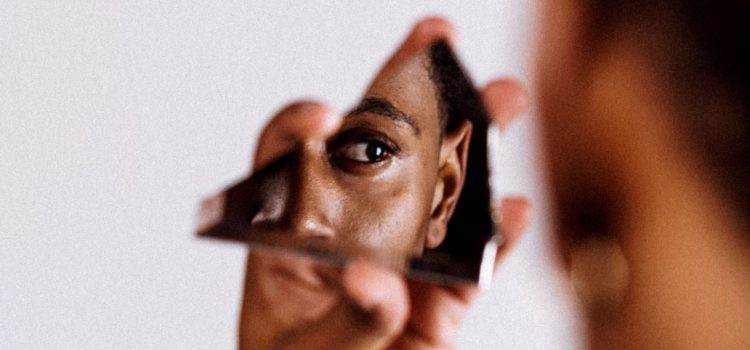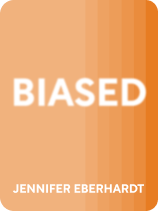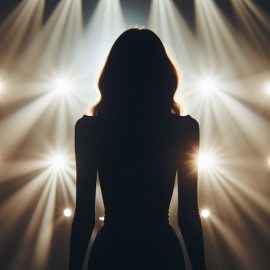

This article is an excerpt from the Shortform book guide to "Biased" by Jennifer L. Eberhardt. Shortform has the world's best summaries and analyses of books you should be reading.
Like this article? Sign up for a free trial here .
What can you learn from reading Biased by Jennifer Eberhardt? What are the key takeaways from the book?
In her book Biased, Jennifer Eberhardt reveals and discusses the dangers of implicit bias—the racial biases that most people don’t realize they hold. Her focus is mostly on anti-black bias in the United States and she discusses it in the context of work, the law, schools, housing, and more.
Keep reading for a brief overview of Biased by Jennifer Eberhardt.
Biased by Jennifer Eberhardt
In her book Biased, Jennifer Eberhardt compiles findings from her decades of research on the social and neurological roots of implicit bias. When you hear the word “bias,” you may think of conscious prejudice—but the most potent biases are actually subconscious. These implicit biases are normal neurological responses to the culture you grow up in.
In the United States, everyone holds some degree of (often subconscious) antiblack bias, even in black communities. This racial bias doesn’t just influence how you make decisions—it determines what you notice in your environment and what becomes invisible. And in high-stakes situations like police encounters, the consequences of racial bias can be devastating.
In this guide, we’ll learn how bias forms in the brain, how racial bias in particular influences police interactions and impacts every level of the criminal justice system, and how some people use science as a tool to promote racial bias. With this foundation, we’ll then look at how bias impacts every area of our daily lives. Finally, we’ll discuss how implicit bias can transform into explicit racism, as it did during the 2017 “Unite the Right” rally in Charlottesville, Virginia.
The Other-Race Effect Is a Form of Categorization
Before we get into the ways bias impacts various parts of daily life, let’s look at why Jennifer Eberhardt says bias exists in the first place: in other words, the brain functions that create it.
Have you ever heard someone say, “They all look alike” about people of another race? That comment doesn’t actually reflect a conscious prejudice—it’s the natural result of human biology. Scientists call this the “other-race effect”: the experience of being able to easily recognize faces of your own race but struggling to identify faces of other races.
The other-race effect is a form of categorization, which is a normal, subconscious brain function that helps us divide all the information we encounter into smaller categories that we can understand. Categorization is not a bad thing by default, but it can easily be hijacked into making harmful generalizations based on race (like, “all black men are dangerous”). Those generalizations are the root of bias.
(Shortform note: One way to avoid this mental reflex is to look for more individuating information about the person. In Superforecasting, authors Philip Tetlock and Dan Gardner argue that any new piece of information we get about a person, no matter how irrelevant it seems, makes it harder for us to categorize that person. This is called the “dilution effect.”)
Bias in Science and Pseudoscience
Racial bias is a centuries-old phenomenon that began as a way to justify slave trading—over time, that bias solidified as leading scientists invented baseless theories that black people were not fully human and therefore fundamentally inferior to white people. This process is called scientific racism, and it’s still used to justify antiblack bias to this day. In particular, the association between black people and apes is still alive and well. Sometimes that association is explicit—like in the widespread “ape” and “monkey” comments online after the election of Barack Obama—but it more frequently happens implicitly. In fact, researchers found that the implicit association between black faces and apes is even stronger than the association between black people and crime. That means that even people who consciously confront their own biases can carry that unconscious ape association and thus see black people as subhuman.
| Ape Jokes Have Deadly Consequences Equating black people to apes is dangerous. In 2009, researchers studied the impact of the black-ape association on threats to assassinate Barack Obama. The researchers determined that the black-ape association—particularly in the form of a controversial political cartoon—directly contributed to the unprecedented number of threats on President Obama’s life. These threats were part of the reason the Department of Homeland Security authorized Secret Service protection for then-Senator Obama beginning in 2007, a full 18 months before he was first elected president. |
Bias in Housing and Neighborhoods
Bias isn’t just a large-scale social phenomenon. It also impacts very personal decisions—like where to live. Antiblack racial bias led to formal housing segregation laws, and although those laws no longer exist, they laid the groundwork for the de facto housing segregation we see today.
The History of Segregated Housing
In the early 20th century in America, black people migrated northward en masse to escape persecution and look for economic opportunities. To keep black people out of their white neighborhoods, private housing developers began instituting official covenants that forbade white homeowners from renting or selling their homes to black people. These covenants were so widespread that by the time the Supreme Court banned them in 1948, black residents were banned from 80% of the neighborhoods in big cities like Los Angeles. (Shortform note: Whole books have been written on the subject of racist housing policies. For example, The Color of Law by Richard Rothstein examines segregated housing in the United States from a legal and historical standpoint.)
For over 30 years, racial covenants ensured that black homeowners and renters were crowded into tiny neighborhoods, completely segregated from their white neighbors. Those covenants are the origin of the segregated neighborhoods and ethnic ghettos that still exist today. Government policies didn’t help—they were even more discriminatory. For example, during the Great Depression recovery effort, government-built housing projects were racially segregated; later, after World War II, federal laws prohibited black veterans from using their GI Bill housing benefits to buy homes in white neighborhoods. (Shortform note: In The New Jim Crow, author Michelle Alexander describes how white elites enacted these laws as a way to keep black people at the bottom of the social hierarchy while ensuring they didn’t band together with poor white people to challenge the social order.)
Modern Segregation
Racial discrimination in housing is now technically illegal, but nearly 70 years of officially-sanctioned segregation has left its mark on American cities. Today, African Americans are more likely to live in segregated neighborhoods than people of any other race—regardless of their economic status. Furthermore, segregation is largely maintained by white people’s racial biases. Studies show that most white people wouldn’t move to a neighborhood that is even 30% black, citing fears of high crime rates and low property values.
| “Space Racism” and Attitudes Toward Black Spaces These biased attitudes toward black spaces reflect the idea of “space racism” that Ibram X. Kendi describes in How to Be an Antiracist. “Space racism” describes the combination of attitudes and policies that contribute to inequality between spaces that are primarily inhabited by people of one race. For example, the funding gap between majority-white and majority-black schools is an example of space racism because it reflects the racist attitude of people in power that white children deserve more resources than black children. |
Bias in Schools
Racial bias also impacts the American education system. Even when black and white students attend the same schools, their educational experiences aren’t equal. White students take it for granted that they’re valued as individuals at school; black students don’t have the same guarantee. Even at a young age, they’re well aware of the stereotypes their teachers might believe, and many black students learn to defend against possible racist treatment by never fully letting their guard down in the classroom. That makes learning difficult because learning is a vulnerable act—it requires letting people in and being honest about what you don’t know or don’t understand.
Unfortunately, black students have good reason to be wary of bias in their schools. Research shows that black students are much more likely to be suspended than students of any other race. (Shortform note: The racial disparities in school discipline are linked to the racial disparities in the criminal justice system. According to the American Civil Liberties Union, school suspensions contribute to the school-to-prison pipeline because students who are suspended or expelled are more likely to get into trouble with the law.)
Reducing Bias in Schools
Thankfully, there are ways to reduce bias in the classroom. Effective strategies include empathy training for teachers, building trust between teachers and students, teaching accurate history of race relations and prejudice, and framing feedback as an expression of faith in a student’s ability to do better (which reassures students of color that criticism of their work isn’t an expression of bias).
However, many educators approach the problem of bias ineffectively by claiming they “don’t see color” as a way to avoid acknowledging race at all. But racial colorblindness isn’t possible—as humans, our brains naturally rely on color to help us distinguish items in our environment, so it isn’t really possible to “not see” it. Beyond that, colorblindness can actually increase racial disparities, because ignoring skin color naturally means ignoring the racial discrimination people face because of it. To reduce bias, educators need to acknowledge the specific struggles their black students face.
| The Many Dangers of Racial Colorblindness Eberhardt examines the “colorblind” approach to racial bias in the context of education, but colorblindness is a common problem in all types of conversations about race. For example, in How to Be an Antiracist, Ibram X. Kendi argues that ignoring race won’t eradicate racism because racist ideas stem from racist policies, not the other way around. Therefore, to fight racism, we have to start by attacking racist policies—and it’s impossible to identify racist policies if we can’t see race. Similarly, in The New Jim Crow, Michelle Alexander argues that colorblindness is dangerous because it keeps us from seeing just how deeply entrenched racism is in public institutions like the criminal justice system. As a result, it’s easy to make the mistake of over-emphasizing personal responsibility and ultimately blame individuals for what is really a systemic problem. |
Bias in the Workforce
Racial bias in the workforce is another massive, widespread problem. In fact, the unemployment rate for young black people is twice as high as it is for young white people.
The main driver of this disparity is racial bias in the hiring process. In one study, researchers sent out thousands of resumes in response to real job applications and discovered that applicants with stereotypically black-sounding names were half as likely to be contacted about the job than applicants with white-sounding names. Another study found that, regardless of gender or education level, white people get 36% more callbacks for jobs than black people.
(Shortform note: The racially biased criminal justice system is also a major driver of black unemployment. In The New Jim Crow, Michelle Alexander describes how people with criminal records have a harder time getting hired. In Chapters 4-5 of this guide, we’ll see how black Americans are more likely to be arrested and face harsher sentences than white Americans, which means black job seekers are more likely to have a criminal record.)
Bias Training
Many businesses looking to reduce workplace bias are following the example Starbucks set in 2018 after police arrested two black men in a Philadelphia Starbucks for the simple crime of asking to use the restroom before purchasing anything.
Starbucks’s corporate response to this incident is a model for addressing racial bias in the workplace on a large scale. Instead of just addressing the incident itself, Starbucks committed to confronting racial bias head-on by holding a four-hour implicit bias training for all 175,000 Starbucks employees. This training required closing down 8,000 Starbucks locations for the day, costing the company roughly $12 million.
| “From Privilege to Progress” The Starbucks incident also sparked change in another way. Melissa DePino (the white woman who filmed and tweeted the whole encounter) and Michelle Saahene (a Black woman who was the first to speak up during the incident) connected over their shared horror and frustration at the injustice they witnessed that day in Starbucks. Together, they launched “From Privilege to Progress,” an organization devoted to bringing white and Black people together to fight systemic and interpersonal racism. Through speaking engagements and online activism, they empower people to push past awkwardness and have hard, necessary conversations about racism. |
Bias in Cases of Police Brutality
Although bias forms as part of a natural process, it can be a dangerous and even fatal component of police encounters. To examine the ways racial bias impacts police brutality, Eberhardt breaks down the 2016 murder of Terence Crutcher (an unarmed black man from Oklahoma) by police officer Betty Shelby. Here are a few key ways that bias escalated that deadly encounter.
Deciding to Pull Over
Officer Betty Shelby and her partner were en route to a domestic violence scene when they first saw Terence Crutcher’s car stalled in the road. Why did Shelby abandon an actively violent situation and decide to pull over? Because racial bias can dictate where people focus their attention.
Scientists study this effect using subliminal priming (flashing words or images on a screen so quickly that participants don’t consciously realize it happened). When researchers primed police officers with either crime-related or neutral words before showing them photos of white and black faces, the officers who were primed to think about crime looked longer at the black face than the white face, but officers in the control group looked at the two faces equally. That might explain why Officer Shelby was drawn to the sight of a random black man while she was responding to an active crime scene.
(Shortform note: The link between racial bias and selective attention is well-established in science; however, Terence Crutcher’s death may not be the best example of this principle in action. Crutcher’s SUV wasn’t pulled over to the side of the road—it was stalled in the middle of the street, blocking traffic, which created a dangerous traffic situation. Under those circumstances, it makes sense for an officer’s attention to be diverted to the scene.)
Seeing Surrender as a Threat
Officer Shelby shot Terence Crutcher while he was walking away from her with his hands in the air, indicating surrender. But Shelby later testified that she fired the gun because she genuinely feared for her life. Why? Because racial bias primes people to see black people’s movements as more threatening by default. Research on the New York Police Department’s controversial “stop, question, and frisk” program (where officers had the liberty to stop anyone on the street if they deemed that person suspicious) showed that black people were more likely than white people to be frisked and to have physical force used on them, but they were less likely to have a weapon. It’s likely that Officer Shelby interpreted Terence’s movements as more suspicious than she would if he had been white.
(Shortform note: Some reviewers of Biased criticized Eberhardt for not mentioning that Crutcher’s autopsy revealed he was high on PCP at the time of the shooting, which may have contributed to his erratic movements. According to her lawyer, Officer Shelby had completed drug recognition training and was aware that Crutcher was likely under the influence of the drug.)
Pulling the Trigger
The most crucial impact of racial bias is on behavior, especially for law enforcement officers, whose actions can have deadly consequences. Racial bias makes officers more prone to use violence against a black suspect than a white one. In a computer simulation study featuring pictures of people of different races holding either a gun or an innocuous object, police officers hit “shoot” faster for black people with guns than white people with guns. This explains why Officer Shelby was so quick to pull the trigger when she assumed Terrance had a gun, an action that had deadly consequences.
(Shortform note: Eberhardt doesn’t touch on the fact that Officer Shelby’s partner shot Crutcher with his Taser just seconds before Shelby fired the fatal shot. This begs the question: Why was Shelby’s first instinct to grab her gun rather than her Taser? Implicit bias may have led her to choose the deadlier weapon, but police training also plays a role: Experts say most officers get extensive firearms training but only “a few hours” of Taser training. Officers are taught to think of their firearm as their “best friend.”)
Bias in the Criminal Justice System
Bias creates racial disparities at every level of the criminal justice system, from police stops to bail to death sentences.
Discretionary Stops
Police officers’ officially-sanctioned biases are on display when they make decisions about who to pull over for equipment-related violations (like expired tags or a broken tail light). It’s often up to the officers’ discretion to decide if a minor equipment issue is worth the time and resources it takes to stop someone. That freedom often becomes an excuse to act on unchecked biases: An analysis of 18.5 million traffic stops over six years found that black drivers are more than twice as likely to be pulled over for equipment-related issues than white drivers.
(Shortform note: Surprisingly, this type of discrimination isn’t illegal. In The New Jim Crow, Michelle Alexander describes how, according to the Supreme Court ruling in United States v. Brignoni-Ponce, it’s legal to use perceived race in the decision to pull someone over so long as race isn’t the only factor.)
The Cash Bail System
In the United States’ cash bail system, bail is money used as collateral to ensure that, if they’re released, the person in jail will return for their official trial and subsequent court dates. (If they don’t return, they’ll lose that money for good.) If the person can post bail, they’re free to go home until the trial; if not, they’re stuck in jail—sometimes for months. The court decides the bail amount for each person based on things like job stability and criminal record, which puts anyone who isn’t rich and white at a disadvantage. Young black men face the most discrimination in bail charges—on average, they’re charged 35% more bail than white arrestees.
The effects of pre-trial detention can be devastating, even for people who ultimately aren’t convicted of a crime. When people are locked up for months awaiting trial, they’re unable to work, pay rent, or take care of their children—and can lose their jobs, homes, and custody rights as a result. (Shortform note: Opponents of bail reform argue that, without collateral, people won’t show up for their court dates and so won’t face justice. However, states that have implemented bail reforms didn’t see significant changes in court appearances—most of the time, people still showed up, even without having money on the line.)
Unequal Sentencing
If a case does go to trial, the outcome is heavily influenced by racial bias. This is especially true in the states where the death penalty is still legal. When a murder victim is white, the murderer is significantly more likely to receive a death sentence than if the victim is black. That disparity both reflects and reinforces the biased belief that white lives are precious and deserve justice, but black lives are expendable.
| Racial Bias Influences Jury Selection One reason juries may be so prone to anti-black racial bias is that they are often overwhelmingly white. A 2010 study of eight southern states found evidence of widespread racial discrimination in jury selection, especially in cases where the defendant is eligible for the death penalty if they are found guilty. In some places (like Houston County, Alabama), this discrimination is so extreme that prosecutors dismissed over 80% of qualified black jurors in cases involving the death penalty. |
From Implicit Bias to Explicit Racism
Until now, we’ve focused on the role of implicit biases that people often aren’t even aware they have. However, in the right circumstances, those implicit biases can bubble up to conscious awareness and become explicit racism. This was the case in Charlottesville, Virginia in 2017, when hundreds of white nationalists and neo-Nazis descended on the campus of the University of Virginia (UVA) before a “Unite the Right” rally. That march and its aftermath marked a fundamental change in the national conversation about race.
On the morning of the rally, following a night of widespread violence and white terrorism, hundreds of heavily armed far-right protesters clashed with several thousand counterprotesters. The tension between the groups quickly escalated from shouting to all-out brawling. That violence turned deadly when a self-professed neo-Nazi plowed his car into a crowd of counterprotesters, injuring dozens and killing 32-year-old Heather Heyer.
The Resurgence of Explicit Racial Bias
The Charlottesville march was the largest public gathering of white supremacists in decades, but the hatred that fueled it had been simmering beneath the surface for generations. Experts think that the sudden resurgence in white nationalism and explicit racial bias has happened because suddenly, white people are “outnumbered.” The population is diversifying more and more, and white people (particularly white men) are no longer the unquestioned rulers of society. No longer being the dominant social group makes many white people feel threatened, so they embrace white supremacist ideas more openly as a coping mechanism.
| “Unite the Right” Was a Prelude to the 2021 Capitol Attack The Unite the Right rally marked a cultural shift in part because it was the largest public gathering of white supremacists in decades. Four years later, on January 6th, 2021, pro-Trump extremists stormed the United States Capitol building in an attempt to stop Congress from certifying Joe Biden’s victory in the 2020 presidential election. Some commentators argue that the president’s failure to condemn white supremacy in Charlottesville emboldened the far right groups who ultimately participated in storming the capitol (indeed, many of the same protestors attended both events). |

———End of Preview———
Like what you just read? Read the rest of the world's best book summary and analysis of Jennifer L. Eberhardt's "Biased" at Shortform .
Here's what you'll find in our full Biased summary :
- How implicit bias forms in the brain
- Whether or not bias training actually works
- Why there has been a sudden resurgence in white nationalism






